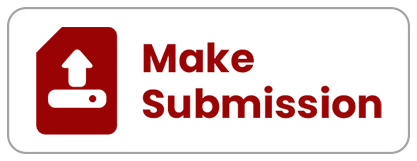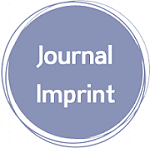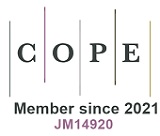Feasibility of Cell Lines for In Vitro Co-Cultures Models for Bone Metabolism
Downloads
Today, over 70 diseases and health conditions are known that negatively affect the bone quality directly or indirectly by their medical treatment, establishing the term metabolic bone disease. Already every third hospitalized patient in Europe suffers from musculoskeletal injuries or diseases. Facing an ageing society and a more and more sedentary lifestyle the number of chronic diseases and consequently metabolic bone diseases are expected to continuously increase. In order to investigate the various disease constellations and/or develop new treatment strategies suitable models representing bone metabolism are required. Many in vivo, ex vivo and in vitro models have been described, which have their advantages and limits. We here summarize the advantages and challenges of frequently used models to investigate bone metabolism, focusing on in vitro co-cultures of bone forming osteoblasts and osteoclasts. Comparing own data with published models, we further elaborate the feasibility of commonly used cells lines for such in vitro co-culture models, in order to provide an easy, constantly available, and up-scalable model system for screening alterations in bone metabolism.
Downloads
Sambrook P, Cooper C (2006) Osteoporosis. Lancet 367: 2010-2018. doi:10.1016/S0140-6736(06)68891-0.
Hernlund E, Svedbom A, Ivergard M, Compston J, Cooper C, Stenmark J, McCloskey EV, Jonsson B, Kanis JA (2013) Osteoporosis in the European Union: medical management, epidemiology and economic burden. A report prepared in collaboration with the International Osteoporosis Foundation (IOF) and the European Federation of Pharmaceutical Industry Associations (EFPIA). Arch Osteoporos 8: 136. doi:10.1007/s11657-013-0136-1.
Stathopoulos IS, Ballas EG, Lampropoulou-Adamidou K, Trovas G (2014) A review on osteoporosis in men. Hormones (Athens) 13: 441-457. doi:10.14310/horm.2002.1550.
Reginster JY, Burlet N (2006) Osteoporosis: a still increasing prevalence. Bone 38: S4-9. doi:10.1016/j.bone.2005.11.024.
Ahlborg HG, Rosengren BE, Jarvinen TL, Rogmark C, Nilsson JA, Sernbo I, Karlsson MK (2010) Prevalence of osteoporosis and incidence of hip fracture in women--secular trends over 30 years. BMC Musculoskelet Disord 11: 48. doi:10.1186/1471-2474-11-48.
Riggs BL, Khosla S, Melton LJ, 3rd (2002) Sex steroids and the construction and conservation of the adult skeleton. Endocr Rev 23: 279-302. doi:10.1210/edrv.23.3.0465.
Cauley JA (2015) Estrogen and bone health in men and women. Steroids 99: 11-15. doi:10.1016/j.steroids.2014.12.010.
Khundmiri SJ, Murray RD, Lederer E (2016) PTH and Vitamin D. Compr Physiol 6: 561-601. doi:10.1002/cphy.c140071.
Ahlborg HG, Nguyen ND, Nguyen TV, Center JR, Eisman JA (2005) Contribution of hip strength indices to hip fracture risk in elderly men and women. J Bone Miner Res 20: 1820-1827. doi:10.1359/JBMR.050519.
Tan LO, Lim SY, Vasanwala RF (2017) Primary osteoporosis in children. BMJ Case Rep 2017. doi:10.1136/bcr-2017-220700.
Stein E, Shane E (2003) Secondary osteoporosis. Endocrinol Metab Clin North Am 32: 115-134, vii.
Sheu A, Diamond T (2016) Secondary osteoporosis. Aust Prescr 39: 85-87. doi:10.18773/austprescr.2016.038.
Emkey GR, Epstein S (2014) Secondary osteoporosis: pathophysiology & diagnosis. Best Pract Res Clin Endocrinol Metab 28: 911-935. doi:10.1016/j.beem.2014.07.002.
Panday K, Gona A, Humphrey MB (2014) Medication-induced osteoporosis: screening and treatment strategies. Ther Adv Musculoskelet Dis 6: 185-202. doi:10.1177/1759720X14546350.
Mazziotti G, Canalis E, Giustina A (2010) Drug-induced osteoporosis: mechanisms and clinical implications. Am J Med 123: 877-884. doi:10.1016/j.amjmed.2010.02.028.
Weng MY, Lane NE (2007) Medication-induced osteoporosis. Curr Osteoporos Rep 5: 139-145.
Pscherer S, Nussler A, Bahrs C, Reumann M, Ihle C, Stockle U, Ehnert S, Freude T, Ochs BG, Flesch I, et al. (2016) [Retrospective Analysis of Diabetics with Regard to Treatment Duration and Costs]. Z Orthop Unfall. doi:10.1055/s-0042-116328.
Pscherer S, Sandmann GH, Ehnert S, Nussler AK, Stockle U, Freude T (2015) Delayed Fracture Healing in Diabetics with Distal Radius Fractures. Acta Chir Orthop Traumatol Cech 82: 268-273.
Ihle C, Freude T, Bahrs C, Zehendner E, Braunsberger J, Biesalski HK, Lambert C, Stockle U, Wintermeyer E, Grunwald J, et al. (2017) Malnutrition - An underestimated factor in the inpatient treatment of traumatology and orthopedic patients: A prospective evaluation of 1055 patients. Injury 48: 628-636. doi:10.1016/j.injury.2017.01.036.
Ehnert S, Aspera-Werz RH, Ihle C, Trost M, Zirn B, Flesch I, Schroter S, Relja B, Nussler AK (2019) Smoking Dependent Alterations in Bone Formation and Inflammation Represent Major Risk Factors for Complications Following Total Joint Arthroplasty. J Clin Med 8. doi:10.3390/jcm8030406.
Wintermeyer E, Ihle C, Ehnert S, Schreiner AJ, Stollhof L, Stockle U, Nussler A, Fritsche A, Pscherer S (2018) [Assessment of the Influence of Diabetes mellitus and Malnutrition on the Postoperative Complication Rate and Quality of Life of Patients in a Clinic Focused on Trauma Surgery]. Z Orthop Unfall. doi:10.1055/a-0654-5504.
Rizzoli R, Biver E (2015) Glucocorticoid-induced osteoporosis: who to treat with what agent? Nat Rev Rheumatol 11: 98-109. doi:10.1038/nrrheum.2014.188.
Briot K, Roux C (2015) Glucocorticoid-induced osteoporosis. RMD Open 1: e000014. doi:10.1136/rmdopen-2014-000014.
Civitelli R, Ziambaras K (2008) Epidemiology of glucocorticoid-induced osteoporosis. J Endocrinol Invest 31: 2-6.
Berris KK, Repp AL, Kleerekoper M (2007) Glucocorticoid-induced osteoporosis. Curr Opin Endocrinol Diabetes Obes 14: 446-450. doi:10.1097/MED.0b013e3282f15407.
De Nijs RN (2008) Glucocorticoid-induced osteoporosis: a review on pathophysiology and treatment options. Minerva Med 99: 23-43.
Canalis E, Delany AM (2002) Mechanisms of glucocorticoid action in bone. Ann N Y Acad Sci 966: 73-81.
Canalis E, Pereira RC, Delany AM (2002) Effects of glucocorticoids on the skeleton. J Pediatr Endocrinol Metab 15 Suppl 5: 1341-1345.
van Staa TP, Leufkens B, Cooper C (2002) Bone loss and inhaled glucocorticoids. N Engl J Med 346: 533-535.
Sambrook PN (2000) Inhaled corticosteroids, bone density, and risk of fracture. Lancet 355: 1385. doi:10.1016/S0140-6736(00)02134-6.
Fraser LA, Adachi JD (2009) Glucocorticoid-induced osteoporosis: treatment update and review. Ther Adv Musculoskelet Dis 1: 71-85. doi:10.1177/1759720X09343729.
Tufano A, Coppola A, Contaldi P, Franchini M, Minno GD (2015) Oral anticoagulant drugs and the risk of osteoporosis: new anticoagulants better than old? Semin Thromb Hemost 41: 382-388. doi:10.1055/s-0034-1543999.
Francucci CM, Ceccoli L, Rilli S, Fiscaletti P, Caudarella R, Boscaro M (2009) Skeletal effects of oral anticoagulants. J Endocrinol Invest 32: 27-31.
Chin KY (2017) A Review on the Relationship between Aspirin and Bone Health. J Osteoporos 2017: 3710959. doi:10.1155/2017/3710959.
Hernandez RK, Do TP, Critchlow CW, Dent RE, Jick SS (2012) Patient-related risk factors for fracture-healing complications in the United Kingdom General Practice Research Database. Acta Orthop 83: 653-660. doi:10.3109/17453674.2012.747054.
Geusens P, Emans PJ, de Jong JJ, van den Bergh J (2013) NSAIDs and fracture healing. Curr Opin Rheumatol 25: 524-531. doi:10.1097/BOR.0b013e32836200b8.
Vuolteenaho K, Moilanen T, Moilanen E (2008) Non-steroidal anti-inflammatory drugs, cyclooxygenase-2 and the bone healing process. Basic Clin Pharmacol Toxicol 102: 10-14. doi:10.1111/j.1742-7843.2007.00149.x.
Suzuki Y, Mizushima Y (1997) Osteoporosis in rheumatoid arthritis. Osteoporos Int 7 Suppl 3: S217-222.
Vestergaard P (2008) Skeletal effects of drugs to treat cancer. Curr Drug Saf 3: 173-177.
Smith MR (2003) Management of treatment-related osteoporosis in men with prostate cancer. Cancer Treat Rev 29: 211-218.
Smith MR, Boyce SP, Moyneur E, Duh MS, Raut MK, Brandman J (2006) Risk of clinical fractures after gonadotropin-releasing hormone agonist therapy for prostate cancer. J Urol 175: 136-139; discussion 139. doi:10.1016/S0022-5347(05)00033-9.
Smith MR, Lee WC, Brandman J, Wang Q, Botteman M, Pashos CL (2005) Gonadotropin-releasing hormone agonists and fracture risk: a claims-based cohort study of men with nonmetastatic prostate cancer. J Clin Oncol 23: 7897-7903. doi:10.1200/JCO.2004.00.6908.
Tuchendler D, Bolanowski M (2014) The influence of thyroid dysfunction on bone metabolism. Thyroid Res 7: 12. doi:10.1186/s13044-014-0012-0.
Tarraga Lopez PJ, Lopez CF, de Mora FN, Montes JA, Albero JS, Manez AN, Casas AG (2011) Osteoporosis in patients with subclinical hypothyroidism treated with thyroid hormone. Clin Cases Miner Bone Metab 8: 44-48.
Vestergaard P, Mosekilde L (2002) Fractures in patients with hyperthyroidism and hypothyroidism: a nationwide follow-up study in 16,249 patients. Thyroid 12: 411-419. doi:10.1089/105072502760043503.
Sendak RA, Sampath TK, McPherson JM (2007) Newly reported roles of thyroid-stimulating hormone and follicle-stimulating hormone in bone remodelling. Int Orthop 31: 753-757. doi:10.1007/s00264-007-0417-7.
Cohen A, Shane E (2003) Osteoporosis after solid organ and bone marrow transplantation. Osteoporos Int 14: 617-630. doi:10.1007/s00198-003-1426-z.
Rubert M, Montero M, Guede D, Caeiro JR, Martin-Fernandez M, Diaz-Curiel M, de la Piedra C (2015) Sirolimus and tacrolimus rather than cyclosporine A cause bone loss in healthy adult male rats. Bone Rep 2: 74-81. doi:10.1016/j.bonr.2015.05.003.
Kulak CA, Borba VZ, Kulak Junior J, Custodio MR (2014) Bone disease after transplantation: osteoporosis and fractures risk. Arq Bras Endocrinol Metabol 58: 484-492.
Lee J, Kim JH, Kim K, Jin HM, Lee KB, Chung DJ, Kim N (2007) Ribavirin enhances osteoclast formation through osteoblasts via up-regulation of TRANCE/RANKL. Mol Cell Biochem 296: 17-24. doi:10.1007/s11010-006-9293-5.
Narayana K, D'Souza UJ, Seetharama Rao KP (2002) The genotoxic and cytotoxic effects of ribavirin in rat bone marrow. Mutat Res 521: 179-185. doi:S1383571802002395 [pii].
Solis-Herruzo JA, Castellano G, Fernandez I, Munoz R, Hawkins F (2000) Decreased bone mineral density after therapy with alpha interferon in combination with ribavirin for chronic hepatitis C. J Hepatol 33: 812-817. doi:S0168-8278(00)80314-1 [pii].
Petty SJ, Wilding H, Wark JD (2016) Osteoporosis Associated with Epilepsy and the Use of Anti-Epileptics-a Review. Curr Osteoporos Rep 14: 54-65. doi:10.1007/s11914-016-0302-7.
Farhat G, Yamout B, Mikati MA, Demirjian S, Sawaya R, El-Hajj Fuleihan G (2002) Effect of antiepileptic drugs on bone density in ambulatory patients. Neurology 58: 1348-1353.
Brigo F, Igwe SC, Del Felice A (2016) Melatonin as add-on treatment for epilepsy. Cochrane Database Syst Rev: CD006967. doi:10.1002/14651858.CD006967.pub4.
Sheth RD (2002) Bone health in epilepsy. Epilepsia 43: 1453-1454.
Ribaya-Mercado JD, Blumberg JB (2007) Vitamin A: is it a risk factor for osteoporosis and bone fracture? Nutr Rev 65: 425-438.
Barker ME, McCloskey E, Saha S, Gossiel F, Charlesworth D, Powers HJ, Blumsohn A (2005) Serum retinoids and beta-carotene as predictors of hip and other fractures in elderly women. J Bone Miner Res 20: 913-920. doi:10.1359/JBMR.050112.
Michaelsson K, Lithell H, Vessby B, Melhus H (2003) Serum retinol levels and the risk of fracture. N Engl J Med 348: 287-294. doi:10.1056/NEJMoa021171.
Wang CY, Fu SH, Wang CL, Chen PJ, Wu FL, Hsiao FY (2016) Serotonergic antidepressant use and the risk of fracture: a population-based nested case-control study. Osteoporos Int 27: 57-63. doi:10.1007/s00198-015-3213-z.
Moura C, Bernatsky S, Abrahamowicz M, Papaioannou A, Bessette L, Adachi J, Goltzman D, Prior J, Kreiger N, Towheed T, et al. (2014) Antidepressant use and 10-year incident fracture risk: the population-based Canadian Multicentre Osteoporosis Study (CaMoS). Osteoporos Int 25: 1473-1481. doi:10.1007/s00198-014-2649-x.
Vestergaard P, Prieto-Alhambra D, Javaid MK, Cooper C (2013) Fractures in users of antidepressants and anxiolytics and sedatives: effects of age and dose. Osteoporos Int 24: 671-680. doi:10.1007/s00198-012-2043-5.
Vestergaard P (2008) Skeletal effects of central nervous system active drugs: anxiolytics, sedatives, antidepressants, lithium and neuroleptics. Curr Drug Saf 3: 185-189.
Hamilton C, Seidner DL (2004) Metabolic bone disease and parenteral nutrition. Curr Gastroenterol Rep 6: 335-341.
Zhu S, Ehnert S, Rouss M, Haussling V, Aspera-Werz RH, Chen T, Nussler AK (2018) From the Clinical Problem to the Basic Research-Co-Culture Models of Osteoblasts and Osteoclasts. Int J Mol Sci 19. doi:10.3390/ijms19082284.
Aerssens J, Boonen S, Lowet G, Dequeker J (1998) Interspecies differences in bone composition, density, and quality: potential implications for in vivo bone research. Endocrinology 139: 663-670. doi:10.1210/endo.139.2.5751.
Foster AD (2019) The impact of bipedal mechanical loading history on longitudinal long bone growth. PLoS One 14: e0211692. doi:10.1371/journal.pone.0211692.
Lessmollmann U, Hinz N, Neubert D (1976) In vitro system for toxicological studies on the development of mammalian limb buds in a chemically defined medium. Arch Toxicol 36: 169-176. doi:10.1007/bf00351978.
Barrach HJ, Neubert D (1980) Significance of organ culture techniques for evaluation of prenatal toxicity. Arch Toxicol 45: 161-187. doi:10.1007/bf02418996.
Houston DA, Staines KA, MacRae VE, Farquharson C (2016) Culture of Murine Embryonic Metatarsals: A Physiological Model of Endochondral Ossification. Journal of visualized experiments : JoVE. doi:10.3791/54978.
Smith EL, Rashidi H, Kanczler JM, Shakesheff KM, Oreffo RO (2015) The effects of 1α, 25-dihydroxyvitamin D3 and transforming growth factor-β3 on bone development in an ex vivo organotypic culture system of embryonic chick femora. PLoS One 10: e0121653. doi:10.1371/journal.pone.0121653.
Smith EL, Kanczler JM, Oreffo RO (2013) A new take on an old story: chick limb organ culture for skeletal niche development and regenerative medicine evaluation. Eur Cell Mater 26: 91-106; discussion 106. doi:10.22203/ecm.v026a07.
Paradis FH, Yan H, Huang C, Hales BF (2019) The Murine Limb Bud in Culture as an In Vitro Teratogenicity Test System. Methods Mol Biol 1965: 73-91. doi:10.1007/978-1-4939-9182-2_6.
Parivar K, Kouchesfehani MH, Boojar MM, Hayati RN (2006) Organ culture studies on the development of mouse embryo limb buds under EMF influence. Int J Radiat Biol 82: 455-464. doi:10.1080/09553000600863056.
Muzic V, Katusic Bojanac A, Juric-Lekic G, Himelreich M, Tupek K, Serman L, Marn N, Sincic N, Vlahovic M, Bulic-Jakus F (2013) Epigenetic drug 5-azacytidine impairs proliferation of rat limb buds in an organotypic model-system in vitro. Croat Med J 54: 489-495. doi:10.3325/cmj.2013.54.489.
Proffit WR, Ackerman JL (1964) Fluoride: Its Effects on 2 Parameters of Bone Growth in Organ Culture. Science 145: 932-934. doi:10.1126/science.145.3635.932.
Abubakar AA, Ibrahim SM, Ali AK, Handool KO, Khan MS, Noordin Mustapha M, Azmi Ibrahim T, Kaka U, Mohamad Yusof L (2019) Postnatal ex vivo rat model for longitudinal bone growth investigations. Animal models and experimental medicine 2: 34-43. doi:10.1002/ame2.12051.
Uribe V, Rosello-Diez A (2019) Culturing and Measuring Fetal and Newborn Murine Long Bones. Journal of visualized experiments : JoVE. doi:10.3791/59509.
Abubakar AA, Noordin MM, Azmi TI, Kaka U, Loqman MY (2016) The use of rats and mice as animal models in ex vivo bone growth and development studies. Bone & joint research 5: 610-618. doi:10.1302/2046-3758.512.bjr-2016-0102.r2.
Kunimoto T, Okubo N, Minami Y, Fujiwara H, Hosokawa T, Asada M, Oda R, Kubo T, Yagita K (2016) A PTH-responsive circadian clock operates in ex vivo mouse femur fracture healing site. Sci Rep 6: 22409. doi:10.1038/srep22409.
Okubo N, Minami Y, Fujiwara H, Umemura Y, Tsuchiya Y, Shirai T, Oda R, Inokawa H, Kubo T, Yagita K (2013) Prolonged bioluminescence monitoring in mouse ex vivo bone culture revealed persistent circadian rhythms in articular cartilages and growth plates. PLoS One 8: e78306. doi:10.1371/journal.pone.0078306.
Okubo N, Fujiwara H, Minami Y, Kunimoto T, Hosokawa T, Umemura Y, Inokawa H, Asada M, Oda R, Kubo T, et al. (2015) Parathyroid hormone resets the cartilage circadian clock of the organ-cultured murine femur. Acta Orthop 86: 627-631. doi:10.3109/17453674.2015.1029393.
Sathi GA, Kenmizaki K, Yamaguchi S, Nagatsuka H, Yoshida Y, Matsugaki A, Ishimoto T, Imazato S, Nakano T, Matsumoto T (2015) Early initiation of endochondral ossification of mouse femur cultured in hydrogel with different mechanical stiffness. Tissue Eng Part C Methods 21: 567-575. doi:10.1089/ten.TEC.2014.0475.
Madsen SH, Goettrup AS, Thomsen G, Christensen ST, Schultz N, Henriksen K, Bay-Jensen AC, Karsdal MA (2011) Characterization of an Ex vivo Femoral Head Model Assessed by Markers of Bone and Cartilage Turnover. Cartilage 2: 265-278. doi:10.1177/1947603510383855.
Batushansky A, Lopes EBP, Zhu S, Humphries KM, Griffin TM (2019) GC-MS method for metabolic profiling of mouse femoral head articular cartilage reveals distinct effects of tissue culture and development. Osteoarthritis Cartilage 27: 1361-1371. doi:10.1016/j.joca.2019.05.010.
Mohammad KS, Chirgwin JM, Guise TA (2008) Assessing new bone formation in neonatal calvarial organ cultures. Methods Mol Biol 455: 37-50. doi:10.1007/978-1-59745-104-8_3.
Garrett IR (2003) Assessing bone formation using mouse calvarial organ cultures. Methods Mol Med 80: 183-198. doi:10.1385/1-59259-366-6:183.
Marino S, Bishop RT, Carrasco G, Logan JG, Li B, Idris AI (2019) Pharmacological Inhibition of NFκB Reduces Prostate Cancer Related Osteoclastogenesis In Vitro and Osteolysis Ex Vivo. Calcified tissue international 105: 193-204. doi:10.1007/s00223-019-00538-9.
Curtin P, Youm H, Salih E (2012) Three-dimensional cancer-bone metastasis model using ex-vivo co-cultures of live calvarial bones and cancer cells. Biomaterials 33: 1065-1078. doi:10.1016/j.biomaterials.2011.10.046..
Salih E (2019) Ex-Vivo Model Systems of Cancer-Bone Cell Interactions. Methods Mol Biol 1914: 217-240. doi:10.1007/978-1-4939-8997-3_11.
Choudhary S, Ramasundaram P, Dziopa E, Mannion C, Kissin Y, Tricoli L, Albanese C, Lee W, Zilberberg J (2018) Human ex vivo 3D bone model recapitulates osteocyte response to metastatic prostate cancer. Sci Rep 8: 17975. doi:10.1038/s41598-018-36424-x.
Salamanna F, Borsari V, Brogini S, Giavaresi G, Parrilli A, Cepollaro S, Cadossi M, Martini L, Mazzotti A, Fini M (2016) An in vitro 3D bone metastasis model by using a human bone tissue culture and human sex-related cancer cells. Oncotarget 7: 76966-76983. doi:10.18632/oncotarget.12763.
Sloan AJ, Taylor SY, Smith EL, Roberts JL, Chen L, Wei XQ, Waddington RJ (2013) A novel ex vivo culture model for inflammatory bone destruction. Journal of dental research 92: 728-734. doi:10.1177/0022034513495240.
Srinivasaiah S, Musumeci G, Mohan T, Castrogiovanni P, Absenger-Novak M, Zefferer U, Mostofi S, Bonyadi Rad E, Grün NG, Weinberg AM, et al. (2019) A 300 μm Organotypic Bone Slice Culture Model for Temporal Investigation of Endochondral Osteogenesis. Tissue Eng Part C Methods 25: 197-212. doi:10.1089/ten.TEC.2018.0368.
Marino S, Staines KA, Brown G, Howard-Jones RA, Adamczyk M (2016) Models of ex vivo explant cultures: applications in bone research. BoneKEy reports 5: 818. doi:10.1038/bonekey.2016.49.
Colombo JS, Howard-Jones RA, Young FI, Waddington RJ, Errington RJ, Sloan AJ (2015) A 3D ex vivo mandible slice system for longitudinal culturing of transplanted dental pulp progenitor cells. Cytometry A 87: 921-928. doi:10.1002/cyto.a.22680.
Alfaqeeh SA, Tucker AS (2013) The slice culture method for following development of tooth germs in explant culture. Journal of visualized experiments : JoVE: e50824. doi:10.3791/50824.
Smith EL, Locke M, Waddington RJ, Sloan AJ (2010) An ex vivo rodent mandible culture model for bone repair. Tissue Eng Part C Methods 16: 1287-1296. doi:10.1089/ten.TEC.2009.0698.
Tecles O, Laurent P, Aubut V, About I (2008) Human tooth culture: a study model for reparative dentinogenesis and direct pulp capping materials biocompatibility. J Biomed Mater Res B Appl Biomater 85: 180-187. doi:10.1002/jbm.b.30933.
Melin M, Joffre-Romeas A, Farges JC, Couble ML, Magloire H, Bleicher F (2000) Effects of TGFbeta1 on dental pulp cells in cultured human tooth slices. Journal of dental research 79: 1689-1696. .
.
.
.
.
.
.
- This work (including HTML and PDF Files) is licensed under a Creative Commons Attribution 4.0 International License.












